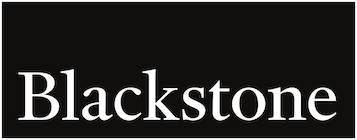Byron Wien: Talking Worried, but Being Complacent
Every summer for the past several decades, I have been organizing lunches for serious investors who spend at least part of their vacation time in eastern Long Island. Those attending include hedge fund wizards, real estate titans, corporate chiefs, thoughtful academics and a few others. Out of the more than 100 who attend the four lunches (25 or so at each) held in different locations, there are more than a dozen billionaires. I moderate a discussion of the major issues facing the financial markets for the better part of two hours, and while the conclusions we reach aren’t always correct, the sessions are lively and stimulating.
Last year we debated the possible conflict with North Korea. Many thought this was a major issue that could disrupt the world order and the financial markets. The group saw Donald Trump and Kim Jong-Un as two mercurial and unpredictable leaders who were hurling threats at each other, and worried that their calling each other names like “dotard” and “little rocket man” could ultimately erupt into missiles fired at South Korea, Japan or even Los Angeles. John Bolton, now National Security Advisor, was arguing for a pre-emptive strike against North Korea. Today, few people are worried about war with Kim Jong-Un’s country. Donald Trump went to Singapore in June and came back with the message that North Korea had a denuclearization plan and would not be launching missiles against anyone. Critics claimed there were no specifics and no plans for verification, but the American people were relieved and North Korea disappeared from the front pages and news broadcasts. Trump’s brand of personal diplomacy seemed to have worked here.
That was not Trump’s only success during the past year. The U.S. economy is growing at a real rate of better than 3%. In the second quarter, growth rose to 4.1%, but the spike was because of some pre-emptory buying in anticipation of higher tariffs. Unemployment was 3.9%, both short and long term interest rates were still low even though we were in the tenth year of the recovery, and inflation was tame. The Administration has fostered a business-friendly mood as regulations in a broad spectrum of areas have been dismantled. As a result, the Democrats may have a tougher time getting control of the House of Representatives than is widely believed and little chance of taking the Senate, even though a number of races look close at this time.
As for the 2020 Presidential election, many attending thought Donald Trump would have a second term. The Democratic Party did not have a candidate the group thought could win. Bernie Sanders and Elizabeth Warren were too far to the left. Some die-hard Democrats brought up fringe names, but at this stage none of them was believed to have the voter-attracting qualities that could defeat Trump. A few thought the Mueller investigation into Russian meddling in the 2016 election would uncover clear collusion between members of the Trump campaign team and President Putin’s operatives (or some other impeachable offenses). Others wondered whether Trump voters really care that much about foreign governments trying to influence our election. Everyone agreed we should do everything possible to stop this kind of perversive activity, but few thought Mueller would prove the direct involvement of Trump himself and that what was discovered would have a major impact on the Trump base and the outcome of the 2020 election.
What voters care about is their sense of well-being. If the economy is still doing well in 2020, the Democrats will have to identify a powerful, charismatic candidate to challenge Trump. Any suggestions? Michael Bloomberg’s name surfaced, but he was thought of as too old to run and lacking national appeal. Oprah was mentioned, but she lacked administrative or foreign policy experience – although, so did Trump. Joe Biden was considered to be uninspiring and unlikely to attract younger voters. Howard Schultz was a possibility. Some believed he had star qualities.
We discussed how much longer the good times might last. While few see serious dangers in the short term, a number of longer-term concerns were raised. Everyone recognized that monetary expansion around the world had played an important role in financial markets during the past decade, but few thought there would be a sharp reversal of that policy. True, the Federal Reserve was raising interest rates and shrinking its balance sheet and the European Central Bank was talking about “tapering,” but the Bank of Japan and the People’s Bank of China were still in an expansionary mode and, despite the Federal Reserve having raised short-term rates over the past year, the federal funds rate was still relatively low and real rates were negative. In the past twelve months, both the Bank of Japan and the European Central Bank balance sheets have expanded almost 8%. In Europe, sovereign interest rates were still negative. In fact, 29% of the bonds in the world had negative nominal interest rates.
Some were worried that the combination of tax cuts and spending increases would cause the U.S. budget deficit to rise sharply. Taking this together with the trade deficit, one could expect the dollar to weaken and interest rates to rise further. I pointed out that in the year 2000 the total debt of the U.S. was $6 trillion and the blended interest rate on government securities was 6%, or $360 billion in debt service. Today the total debt is $21 trillion and the blended interest rate is a little over 2% or $450 billion in debt service. The debt has more than tripled, but the debt service has only increased 25%. An expansive monetary policy may have proved Dick Cheney right in saying “deficits don’t matter.” The U.S. is growing faster than Europe or Japan and our Treasury yields are higher than those of other sovereigns, so the dollar should do well against the euro and the yen.
The tight labor market around the world was thought to be a serious issue. While average hourly earnings in the United States had not even risen 3%, many felt this was about to change. Nationalism and a reluctance to accept immigrants almost everywhere contributed to this problem, because facilitating immigration might have reduced pressure on wages. I argued that everyone at these lunches had been fearing rising inflation for a decade because of rapid monetary expansion. As Milton Friedman famously said, “Inflation is always and everywhere a monetary phenomenon.” Perhaps the combination of globalization and technology is keeping inflation low and will continue to do so.
Last year, Europe was showing real growth of close to 2%, Emmanuel Macron and Angela Merkel were providing strong leadership and the European Union seemed likely to endure for an indefinite period. All of that seems to have changed since the summer of 2017. Populism has continued to spread. Merkel’s power has been diminished as a result of her party’s loss of seats in Parliament, and she has had to cobble together an unlikely coalition. The Italian election has brought leaders into government who support a flat tax and guaranteed income for all citizens and believe these can be achieved without increasing the already large budget deficit. The United Kingdom is trying to negotiate a “soft” break with Europe, but whether that objective will be reached is uncertain. The strong growth that Europe was enjoying in 2017 has declined, and George Soros has written that Europe is facing an “existential crisis.” While many attendees were concerned about the long-term outlook for the European Union, most thought Europe would “muddle through” for at least several more years. The common currency had proven itself to be a net positive (good for northern Europe; bad for southern Europe) for trade, and negotiations with the United States were likely to be more effective if the alliance worked together.
There was a vigorous debate about China at all of the sessions. The bulls (myself among them) argued that China was likely to become the technological leader of the world by 2025, reaching its objective of independence from foreign imports. On a purchasing power parity basis China is already the largest economy in the world and by 2035 it is likely to surpass the United States in terms of real Gross National Product. The bears argued that China was already slowing down. Part of this was attributed to a policy decision to try to cool the economy with the objective of clearing some of the non-performing loans on the books of its banks and shadow banks, but others pointed to declining demand from China’s foreign customers and its own middle class. A strong case was made for capitalism over communism because in order to have a growing economy, you need Western-style intellectual freedom and China doesn’t have that. Others argued that there was more freedom there than the West appreciates and China’s abundance of billionaires, venture capitalists and entrepreneurs supports that view.
Those who saw China continuing on its present growth course believed it would be an even more formidable competitor to the United States by the middle of the next decade. By that time it could be the world leader in digital technology, biotechnology and agricultural technology. Others disagreed with this view and argued that the Chinese system discouraged intellectual challenges and creativity and that free markets, such as those that prevailed in Europe and the United States, would win out in the long run. In that connection, some thought that the Party inserted itself into almost every entrepreneurial initiative and the state-owned enterprises were very inefficient. Several believed that China had developed a system of government that retained Communism at the political level, but tolerated capitalism to provide incentives to individuals and companies that were driving the economy. There is no question that the progress China has made since Mao died in 1976 has been unprecedented.
As for the matter of trade, China is the one region where the trade imbalance is significant. We have minor imbalances with Europe, Latin America and Japan. In contrast, the United States imports over $500 billion in goods and services from China and we ship $130 billion to them. The U.S. has already proposed tariffs on $50 billion in goods and threatened $200 billion more and China has retaliated. A trade war is not in anyone’s interest but no agreement is in sight. This is a dispute that is likely to be in negotiation well into next year. China has let its currency depreciate to encourage foreign buyers to buy its goods, but there is a limit to how far they can go with this before it has an adverse impact on other aspects of the economy, such as inflation.
One of the most interesting aspects of the China discussions was the importance of the Belt and Road Initiative and the growth of China’s military strength. China is making investments in infrastructure and ports throughout Asia and Africa. Because the United States did not participate in the Trans-Pacific Partnership, China’s influence throughout these regions is increasing. The Chinese are establishing military bases on offshore islands and throughout Asia and will soon dominate the Indian Ocean and the South China Sea putting them in a position to influence world trade. As China’s military increases its power, it could become a political factor within the country. Up until now Western observers have focused on China’s economic importance, but the important takeaway from the lunches was its growing military strength and potential geopolitical influence. The current focus on Russia as a primary military and geopolitical threat may be challenged.
We had several technology experts at the various lunches. The consensus was that advances in the next decade will rival the remarkable breakthroughs of the last thirty years. Healthcare will see major new products and procedures addressing Alzheimer’s, heart disease and cancer; farms will become more productive; and, of course, we will see more applications of artificial intelligence. This raises the question of what will happen to workers, such as paralegals and restaurant and healthcare employees, who will lose their jobs as a result of the technology. The usual argument was made that all the people working in agriculture found jobs as the industrial revolution took hold, but I pointed out that not all the horses found alternative employment with the advent of the automobile. The world is going to need more caregivers as the population grows older and more people will work in wellness activities like yoga and physical therapy. The work week may become shorter as technology permits jobs to get done with fewer hours of effort and millennials, wanting more job flexibility and vacation, may choose lifestyle enrichment in preference to income increases. Because the job market is tight right now, technology may provide employers some relief by decreasing the demand for more workers. There was general agreement, however, that there were limits to where artificial intelligence could make inroads. Knowledge-based jobs requiring a high level of creativity were thought to be secure, but anything repeatable was considered vulnerable. This is a development with enormous potential impact that will have to be watched carefully.
Some investors questioned whether the returns on private equity were headed lower. They suggested that the firms had raised too much money over the past few years and prices for companies that were targets were high. The private equity investors attending argued that there were still attractive prospects out there and that they expected to maintain historic returns going forward. There is a recognition, however, that the ten-baggers of yesteryear are almost impossible to find.
As usual, I polled the various lunch groups on a variety of issues. Most believed the Standard & Poor’s 500 would reach 3000 by year-end and that the 10-year U.S. Treasury yield would rise over the next year, but stay in the 3%–3½% range because so many investors were searching for a safe place to park their money. As a result of rising demand and reduced production, primarily from Iran and Venezuela, the price of oil was expected to rise, with Brent possibly reaching $80 a barrel.
In general, I would say that the group was very complacent. Some longer-term issues worried them, but few saw any imminent danger that would cause them to reduce their investment exposure. The majority agreed that the next recession would not occur until after the 2020 presidential election.
Please see the Investor tab of our website for future webcasts and information:
http://ir.blackstone.com/investors/events/default.aspx
Click here to view the Third Quarter 2018 Blackstone Webinar: “The Market Implications of Global Disarray” featuring Byron Wien, Vice Chairman, Multi-Asset Investment Group and Joe Zidle, Investment Strategist.
Click here to view the replay of the Thursday, April 12, 2018 11:00 am ET Blackstone Webcast: “Triumphant Equity Returns Are Over” featuring Byron Wien, Vice Chairman, Multi-Asset Investment Group.
Click here to view the replay of the Thursday, January 4, 2018 11:00 am ET Blackstone Webcast: “The Ten Surprises of 2018” featuring Byron Wien, Vice Chairman, Multi-Asset Investment Group.
Click here to view the replay of the Thursday, October 5, 2017 11:00 am ET Blackstone Webcast: “Some Troubling Worries in a Positive Outlook” featuring Byron Wien, Vice Chairman, Multi-Asset Investment Group.
The webcast presentation is downloadable from the interface.
Please click here to unsubscribe from Byron Wien’s Monthly Commentary mailing list at any time.
The views expressed in this commentary are the personal views of Byron Wien and do not necessarily reflect the views of The Blackstone Group L.P. (together with its affiliates, “Blackstone”). The views expressed reflect the current views of Byron Wien as of the date hereof,and neither Byron Wien nor Blackstone undertake any responsibility to advise you of any changes in the views expressed herein.
Blackstone and others associated with it may have positions in and effect transactions in securities of companies mentioned or indirectly referenced in this commentary and may also perform or seek to perform services for those companies. Investment concepts mentioned in this commentary may be unsuitable for investors depending on their specific investment objectives and financial position.
Tax considerations, margin requirements, commissions and other transaction costs may significantly affect the economic consequences of any transaction concepts referenced in this commentary and should be reviewed carefully with one’s investment and tax advisors. All information in this commentary is believed to be reliable as of the date on which this commentary was issued, and has been obtained from public sources believed to be reliable. No representation or warranty, either express or implied, is provided in relation to the accuracy or completeness of the information contained herein.
This commentary does not constitute an offer to sell any securities or the solicitation of an offer to purchase any securities. This commentary discusses broad market, industry or sector trends, or other general economic, market or political conditions and has not been provided in a fiduciary capacity under ERISA and should not be construed as research, investment advice, or any investment recommendation. Past performance is not necessarily indicative of future performance.



